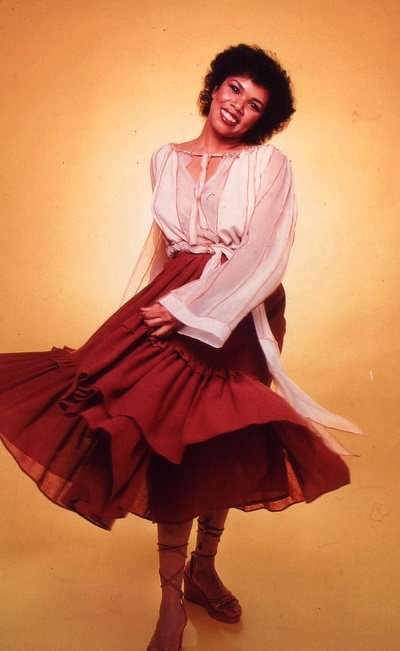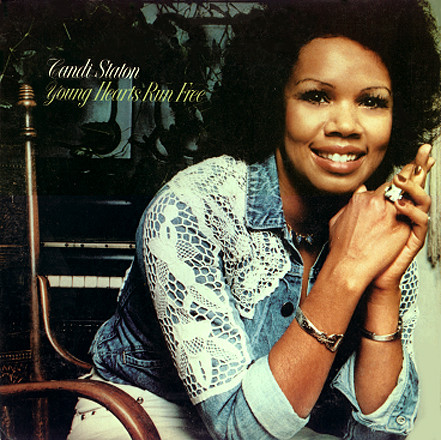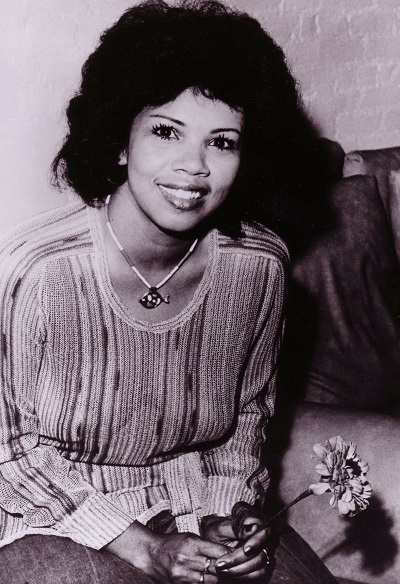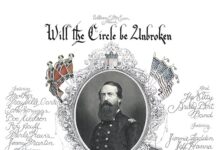Photos courtesy of Bill Carpenter and Mario Casselli
It goes without question that one of music’s most seminal anthems depicting necessary assertion and cathartic independence is Gloria Gaynor’s 1979 classic “I Will Survive.”
Within this track, the protagonist sends a significant other “out the door” with a declarative, “You’re not welcome anymore.” Backed by a bouncing disco beat and an overall aesthetic of jubilation, the song is as much fun as it is impactful.
It’s also not the first to follow this format.
I will go so far as to say that soul singer Candi Staton set the actual precedent for the ultimate empowerment song. In 1976, Staton, a soul songbird who spent years building her career while constantly flirting between the gospel and secular worlds, would release her most successful single. A personal reflection of having the courage to exit an abusive relationship, “Young Hearts Run Free,” would hit Number 20 on the Billboard Hot 100. Despite its noticeable chart gap against “I Will Survive,” this song remains just as iconic and just as influential all these decades later.
“I was married at 18 and had four kids in quick succession. My ex-husband was very abusive. He kept me barefoot and pregnant for seven years. One baby after the other. The only time he could trust me was when I was pregnant,” Staton told me during a recent interview. “I lived the most miserable life. I had a nervous breakdown with him. I had to leave him.
“I had four children, no formal education. I didn’t know what I was going to do. I was between a rock and a hard place,” she adds. “What am I going to do? I took my singing for granted. I didn’t know I was talented. I didn’t know that I had a talent until I left him and started singing in clubs.”
The song’s genesis would inadvertently pour out of Staton during a lunch meeting with R&B musician, songwriter, and producer David Crawford.
“We’d sit down to lunch, and I noticed him writing on a pad as we talked. I was talking to him as a friend. I was telling him some things that were going on in my life and he was writing them down,” Staton told me. “He wrote a song and it was called “Young Hearts Run Free.” He said, ‘I’ve written you a song that’s going to last forever.’ That’s what he told me.”
At the time, Staton was at work on what would be her fifth album — her second for Warner Brothers. Leading up to this moment, she would be a frequent staple of the US R&B chart. Pop success, however, was more elusive; her cover of Tammy Wynette’s “Stand By Your Man,” was her only Top 40 hit — peaking at Number 24 in 1970.
After a 40-day fast, Crawford would present Staton with the track that would become her biggest hit.
“We had done a bunch of songs that were on the album, but we didn’t have the song that he was trying to get. He wanted to get a hit record,” Staton says. “David fasted for 40 days. He was so skinny when I saw him again. I’m like, ‘David, what in the world?’ He had already laid the track — I had just come from North Carolina doing some shows. The track was made.
“I walked in the studio, and it was the most beautiful music I thought I had ever heard. I said, ‘What in the world is that?’ And he looked at me and he smiled. He said, ‘You’re going to love it. You’re going to love it.’ And that’s how it came about.”
As it kicks in, “Young Hearts Run Free” sounds like it’s straight out of the Barry White/Love Unlimited Orchestra playback. A flourish of brass and strings fill your ears for a few seconds before Staton’s voice joins in, unleashing an even combination of vulnerability and assuredness:
What’s the sense in sharing, this one and only life
Ending up just another lost and lonely wife
You’ll count up the years, and they will be filled with tears
Love only breaks up, to start over again
You’ll get the baby, but you won’t have your man
While he is busy loving every woman that he can
Say I’m gonna leave a hundred times a day
It’s easier said than done
When you just can’t break away (when you just can’t break away)
And then comes a chorus of true liberation, freedom, and abandon:
Oh, young hearts run free
Never be hung up, hung up like my man and me, my man and me
Oh, young hearts, to yourself be true
Don’t be no fool when love really don’t love you, don’t love you
Though the song targets a universal audience, this is Staton’s own life encapsulated in mere minutes.

“He was very controlling. I was trying to get away from him. I didn’t know how to get away from him because he was always threatening me, my children and my mom, who was very sick at the time,” she says. “I got out of that relationship. I’m the leaving queen, honey. I don’t stick around to get hurt, to get beat. I can see the signs when abuse is beginning to get out of my range where I can handle it. In my mind, I start to put things together of ‘How am I going to get out of this?’”
Staton would enter the music booth and read the song’s words directly from Crawford’s lyric sheet. Her vocals would be recorded in one take.
“He said, ‘You can come in now. I got what I need.’ I said, ‘I was just running through it.’ ‘No you weren’t. You weren’t running through it. We got it,’” Staton recounted. “That was it. That was it because it was my story and I felt it as I sung each lyric. I just felt it in my spirit. I’m telling my story in song.
“That’s how it came about. One take,” she adds. “I love singing it because I’m singing my story.”
Staton would head straight from the studio in Los Angeles to North Carolina for a show that night after recording “Young Hearts Run Free” — still coming to terms with the fact this would likely be the track that would formally push her into the spotlight.
“I walked into the dressing room and I said, ‘I just made a hit record.’ I told my band that before we did the show,” she says. “I said, ‘I just came out of LA and made a hit record.’ I said, ‘You’re going to love it. You’re going to love this record.’ I just said it. It was a prophecy.
Staton’s album would ultimately be titled Young Hearts Run Free. While it contains several standout songs, including opener “Run to Me,” “You Bet Your Sweet, Sweet Love,” and “Living for You,” “Young Hearts Run Free” is the obvious breakthrough, coming in at the album’s halfway mark. Per Staton, Warner Brothers hears what Crawford hears and fires on all cylinders to get the song mass exposure.

“It needed to be broadcast; it needed to be on the radio. It needed to be pushed. (Warner Brothers) had all the equipment and they had everybody ready to do it,” Staton told me. “When we launched this song, it was immediate — every station in the world was playing it. I was at WBLS in New York and I was coming down the stairs and a little girl ran to me and hugged me and she was crying. She said, ‘Thank you.’ I said, ‘For what, baby?’ She said, ‘Thank you, thank you for making that song. My mother used to play (that song) every day before I went to school. All my peers got pregnant, some of my peers dropped out but I made it through high school and college because I listened to your song and I took the words to heart.’
“That’s what makes me happy. If I can do something like that and turn somebody’s life around, that makes me happy,” she adds.
In addition to making a sizable dent on the US charts, “Young Hearts Run Free” would peak at Number 4 in Australia and Number 2 in the UK, where it would be certified platinum.
The track would also take Staton out of the infamous Chitlin’ Circuit. She would go on to share larger stages with a virtual who’s who of superstars in soul music — the Temptations, Johnnie Taylor, the Whispers, Kool and the Gang, Chaka Khan, and James Brown, just to name a few.
“It was wonderful because we had real dressing rooms; in the Chitlin’ Circuit we didn’t have real dressing rooms. We dressed where we could – in the closet, in the kitchen, wherever. Some of us even dressed on the buses,” she says. “I’m not downing the Chitlin’ Circuit because it was a school for me. It taught me what I know today. I don’t know what I would have done had I not gone through the Chitlin’ Circuit. It was like going through learning season — to learn how to do shows.”
Staton adds that with having to be more of a visual performer on stage and on television thanks to the success of “Young Hearts Run Free,” she’d frequently take cues learned years earlier while on the road with icons like Jerry Butler and Clarence Carter (who she would be married to for a time).
“I did not know how to do shows, that kind of secular music because all my life I had been in the church and I sung gospel music,” she says. “In the church you don’t have to perform. You just stand there with your little hands folded looking up at the sky and sing your song while everybody shouted and screamed and threw pocketbooks. It’s different in the secular world; they mean for you to put a show on. You have to put on a show.
“(Jerry Butler) … said, ‘You can’t do that!’ I said, ‘What, Jerry?’ He said, ‘You’re not in church! You better give them people a performance.’ I said, ‘I don’t know how.’ He said, ‘Let me tell you how,’” she adds. “They called him the “Ice Man;” he had no moves but he taught me how to have moves. He said, ‘You got hips?’ I said, ‘Yes sir.’ ‘Well then move ‘em!’ I said, ‘OK.’ He said, ‘Learn how to move your hips with the song. Sway with the song. You look them people in their eyes. You walk down that aisle and you touch people and you get to know people. It’s like having a conversation, Candi. That’s how you do it!’ I said, ‘OK.’”
To date, Staton has released 30 studio albums. Her follow-up for Warner Brothers, 1977’s Music Speaks Louder Than Words would contain unique interpretations of the Bee Gees’ “Nights On Broadway,” the Doobie Brothers’ “Listen To The Music,” and Freddy Fender’s “Before The Next Teardrop Falls.” The messaging behind “Young Hearts Run Free” would sustain in subsequent Staton songs. Probably the best example is “Victim” from her 1978’s House of Love album which proclaims: “I told you young hearts run free / When I didn’t listen to myself / Engulfed by the power of love / I just feel right in, right on it.”
Beginning in the early 1980s, her recording output would steer largely back to gospel music. Based in Georgia, Staton is also an author. Her most recent work is a collection of short stories entitled Beyond a Shadow of a Doubt.
Let’s propel forward to 1996 when “Young Hearts Run Free” makes a dramatic comeback ─ literally. The song becomes a central piece of both Baz Luhrmann’s 1996 film Romeo + Juliet and its accompanying soundtrack. This time the track would be sung by European house artist Kym Mazelle.
At work on a new album yet hesitant to still touring (“I think I’m about all done with all that. I’ve had enough. If the Lord allows me to do something else, I’ll do that,” she tells me), Staton is thrilled to see her song endure, especially among younger listeners via viral social media sharing.
“I love the song. The lyrics are not happy lyrics but the music makes it happy,” she tells me. “I don’t mind that being the one song (people) remember me by because it’s such great lyrics. It’s a teaching song. If they take those words to heart, it can last — their lives will be so different. I believe the song is going to be a great song for you to listen to the words and take it to heart.
“David prophesized…that this song will never die, and I think it’s true. It doesn’t seem like it’s going to ever die,” she adds. “It will never go away because each generation goes through the same identical things.”
***
Share your feedback and suggestions for future columns with Ira at vinylconfessions84@gmail.com. Ira’s book, “Hello, Honey, It’s Me”: The Story of Harry Chapin, is available for purchase here.




















